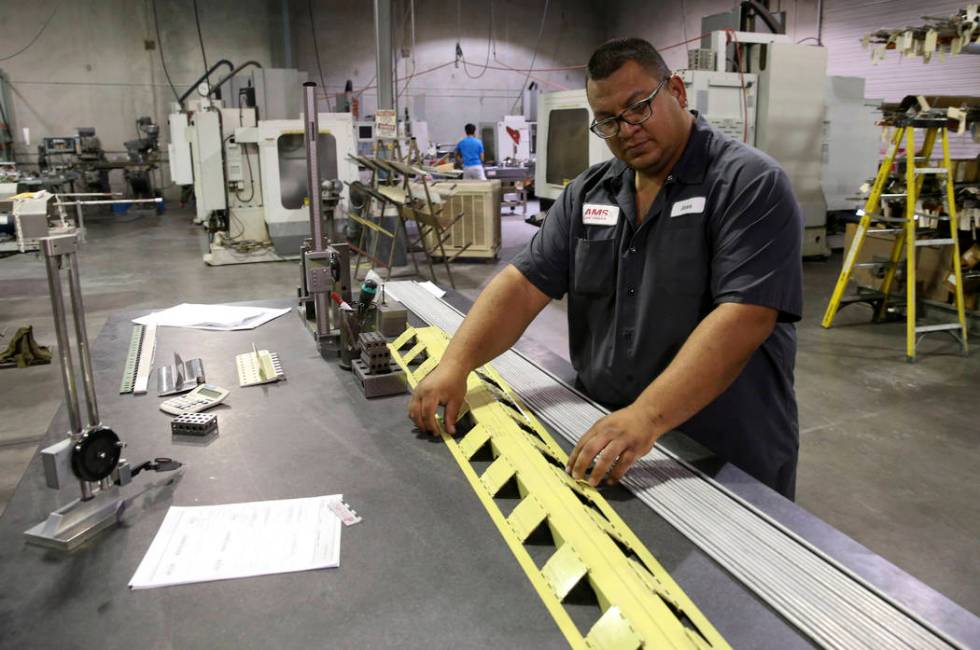EDITORIAL: New economic development plan should level the playing field for all businesses

Nevada will soon have a revised blueprint for the state’s economic development strategy. Let’s hope it focuses less on picking winners and losers and more on giving all businesses an equal opportunity to thrive.
Last month, Michael Brown, executive director of the Governor’s Office of Economic Development, announced a pending update for the state’s 2012 Economic Development Plan. That document was one of former Gov. Brian Sandoval’s key initiatives. When Gov. Sandoval entered the Governor’s Mansion in 2011, Nevada’s unemployment rate of 14.9 percent was the highest in the country.
He made it clear that he wanted his economic agenda to address more than just high unemployment.
“State government, across all agencies, must work hand-in-glove with local governments, regional development organizations and the private sector to bring our economy into alignment with the current reality and the emerging global environment,” Gov. Sandoval wrote at the time.
If you can make it through the buzzwords, you mind notice something radical, particularly for a Republican. Gov. Sandoval was professing a belief that government bureaucrats could help drive prosperity by taking a more active role in the state economy. Private individuals and businesses acting with their own money may have turned the dry, dusty desert near Las Vegas into the entertainment capital of the world, but Gov. Sandoval was essentially arguing that the state needed to be more proactive to help the private sector succeed.
In some respects, he was right. Businesses do need the government to act — primarily by creating a level playing field and then getting out the way. Gov. Sandoval’s efforts to streamline approval processes and cut red tape were commendable. There’s value in forging partnerships between businesses and higher education institutions, which his plan demanded. Sandoval also viewed improving Nevada’s education system as a key part of the effort to ensure the state had a workforce capable of meeting future needs. He correctly noted, “Entire career paths will come and go by the time today’s first graders graduate from high school.”
Unfortunately, Gov. Sandoval’s efforts to improve state schools mostly fizzled despite the largest tax increase in Nevada history, specifically to fund education. After sweeping to power in 2018, Democrats gutted his most promising reforms, which involved retaining third graders struggling to read and offering Opportunity Scholarships for low-income families.
But Gov. Sandoval’s abatement-based economic plan roared forward, showering subsidies and other tax breaks on selected businesses. This approach culminated with $1.3 billion in handouts to lure the Tesla battery factory to Northern Nevada. Other projects, such as Faraday Future, didn’t work out. Credit to state officials for structuring that giveaway in such a way that Nevada wasn’t on the hook when Faraday crashed and burned.
Despite plenty of celebratory press conferences, the Sandoval approach yielded mixed results. Job growth was healthy under the former governor and unemployment dropped significantly, but much of that can be attributed to national trends, as the country pulled out of the Great Recession. Meanwhile, the state’s general fund has been shorted billions in potential tax revenue, and many of the promises made by those receiving special government dispensation have fallen short.
The question for Gov. Steve Sisolak as his administration fine-tunes its economic development agenda: Is it more productive to manipulate the marketplace by offering favored interests sweetheart tax deals as a means to spur job creation — and entering Nevada into a race to the bottom with other states — or to simply foster a tax and regulatory climate intended to attract entrepreneurs and investors and to create a thriving environment for both new and existing businesses alike?
The latter has a proven track record of success. Gov. Sisolak and Mr. Brown would be wise to acknowledge that fact as they update this administration’s economic development game plan.